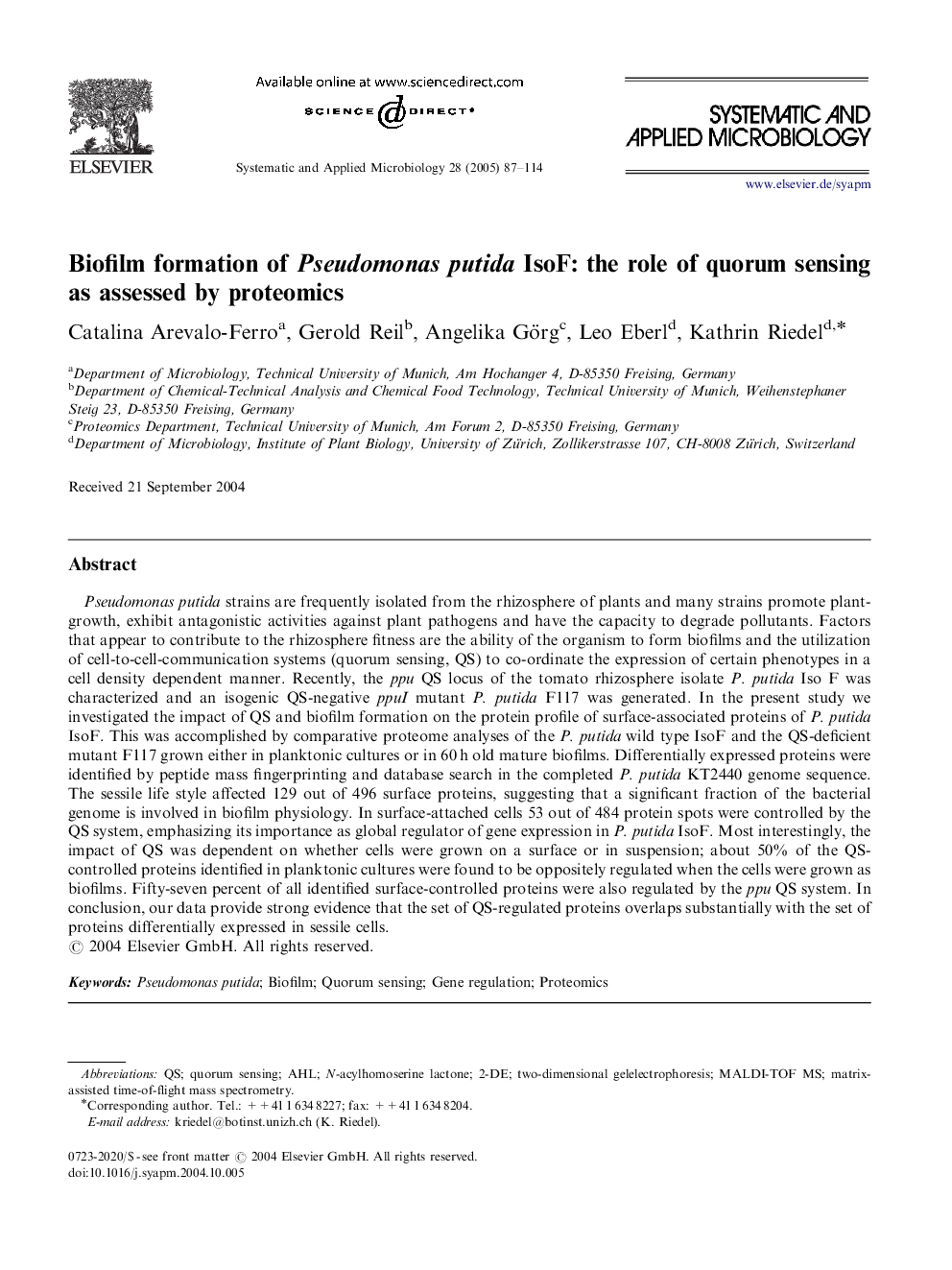| کد مقاله | کد نشریه | سال انتشار | مقاله انگلیسی | نسخه تمام متن |
|---|---|---|---|---|
| 10879828 | 1076796 | 2005 | 28 صفحه PDF | دانلود رایگان |
عنوان انگلیسی مقاله ISI
Biofilm formation of Pseudomonas putida IsoF: the role of quorum sensing as assessed by proteomics
دانلود مقاله + سفارش ترجمه
دانلود مقاله ISI انگلیسی
رایگان برای ایرانیان
کلمات کلیدی
موضوعات مرتبط
علوم زیستی و بیوفناوری
علوم کشاورزی و بیولوژیک
بوم شناسی، تکامل، رفتار و سامانه شناسی
پیش نمایش صفحه اول مقاله

چکیده انگلیسی
Pseudomonas putida strains are frequently isolated from the rhizosphere of plants and many strains promote plant-growth, exhibit antagonistic activities against plant pathogens and have the capacity to degrade pollutants. Factors that appear to contribute to the rhizosphere fitness are the ability of the organism to form biofilms and the utilization of cell-to-cell-communication systems (quorum sensing, QS) to co-ordinate the expression of certain phenotypes in a cell density dependent manner. Recently, the ppu QS locus of the tomato rhizosphere isolate P. putida Iso F was characterized and an isogenic QS-negative ppuI mutant P. putida F117 was generated. In the present study we investigated the impact of QS and biofilm formation on the protein profile of surface-associated proteins of P. putida IsoF. This was accomplished by comparative proteome analyses of the P. putida wild type IsoF and the QS-deficient mutant F117 grown either in planktonic cultures or in 60Â h old mature biofilms. Differentially expressed proteins were identified by peptide mass fingerprinting and database search in the completed P. putida KT2440 genome sequence. The sessile life style affected 129 out of 496 surface proteins, suggesting that a significant fraction of the bacterial genome is involved in biofilm physiology. In surface-attached cells 53 out of 484 protein spots were controlled by the QS system, emphasizing its importance as global regulator of gene expression in P. putida IsoF. Most interestingly, the impact of QS was dependent on whether cells were grown on a surface or in suspension; about 50% of the QS-controlled proteins identified in planktonic cultures were found to be oppositely regulated when the cells were grown as biofilms. Fifty-seven percent of all identified surface-controlled proteins were also regulated by the ppu QS system. In conclusion, our data provide strong evidence that the set of QS-regulated proteins overlaps substantially with the set of proteins differentially expressed in sessile cells.
ناشر
Database: Elsevier - ScienceDirect (ساینس دایرکت)
Journal: Systematic and Applied Microbiology - Volume 28, Issue 2, 16 March 2005, Pages 87-114
Journal: Systematic and Applied Microbiology - Volume 28, Issue 2, 16 March 2005, Pages 87-114
نویسندگان
Catalina Arevalo-Ferro, Gerold Reil, Angelika Görg, Leo Eberl, Kathrin Riedel,